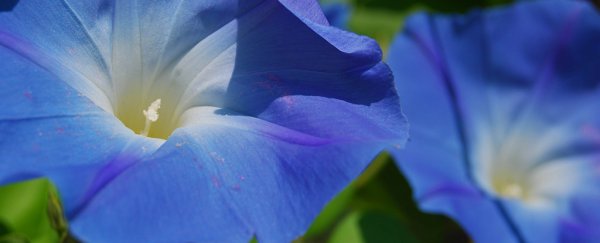Seeds from the morning glory flower can withstand huge doses of ultraviolet radiation, scientists have discovered, giving us more evidence that certain types of plant could be able to hitchhike between worlds through deep space.
That long-standing idea is known as panspermia - the hypothesis that life can be seeded throughout the Universe, carried by meteoroids, comets, planets, and even spacecraft. And now we have research showing how it could actually work.
According to the study, these morning glory seeds can survive ultraviolet radiation at levels up to 6 million times that used to sterilise drinking water - even at the exact wavelength known to do most damage to DNA, and over a period of hundreds of days.
"We cannot say that we have evidence for the panspermia hypothesis, but we can say that showing the resistance of plant seeds to conditions in space makes the hypothesis more plausible," one of the team, David Tepfer from the Palace of Versailles Research Centre in France, told Maddie Stone at Gizmodo.
The other seeds involved in the experiments were burned to a crisp, showing that morning glory seeds have particular properties that makes them more robust. Plants were successfully grown from these seeds even after the radiation barrage.
Morning glory seeds are relatively large, have thick coats, and can survive decades in soil here on planet Earth before germinating, which is why they were chosen for this study.
The researchers think that flavonoids in the seed coating - compounds acting as natural sunscreens - could play a big role in helping the morning glory seeds stay alive.
Tobacco plant seeds and Arabidopsis thaliana seeds were also included in the experiment - samples taken from a 2009 test that found about one in five of these types of seeds could germinate on Earth after spending 558 days in space.
But despite those promising results, the tobacco and A. thaliana seeds couldn't withstand the higher UV dosage, and were all killed off - so perhaps not the best seeds to take on our first trip to Mars after all.
The researchers also looked more closely at the DNA of the seeds that had previously been in space, finding that certain bits of genetic code had become damaged, suggesting that this damage can be repaired or worked around as seeds grow.
If life really can find a way across deep space, it means it's possible that the first life on Earth could have arrived from somewhere else. This could also help us figure out how to get organisms from one planet to another.
The study does have its limitations - those morning glory seeds now need to be tested in space as well as in the lab. But as far as Tepfer is concerned, the research shows a potential way to spark life on distant planets before we venture there ourselves.
"Imagine dormant seeds being sent to exoplanets to release microbial life or the building blocks of life, even if the seeds themselves might not germinate and form plants," he told Gizmodo.
"We humans should stay on Earth and clean up our mess, but during the years our species is alive and technologically competent, we should embrace our role as disseminators of life - perhaps using plant seeds loaded with microorganisms."
The research has been published in Astrobiology.
